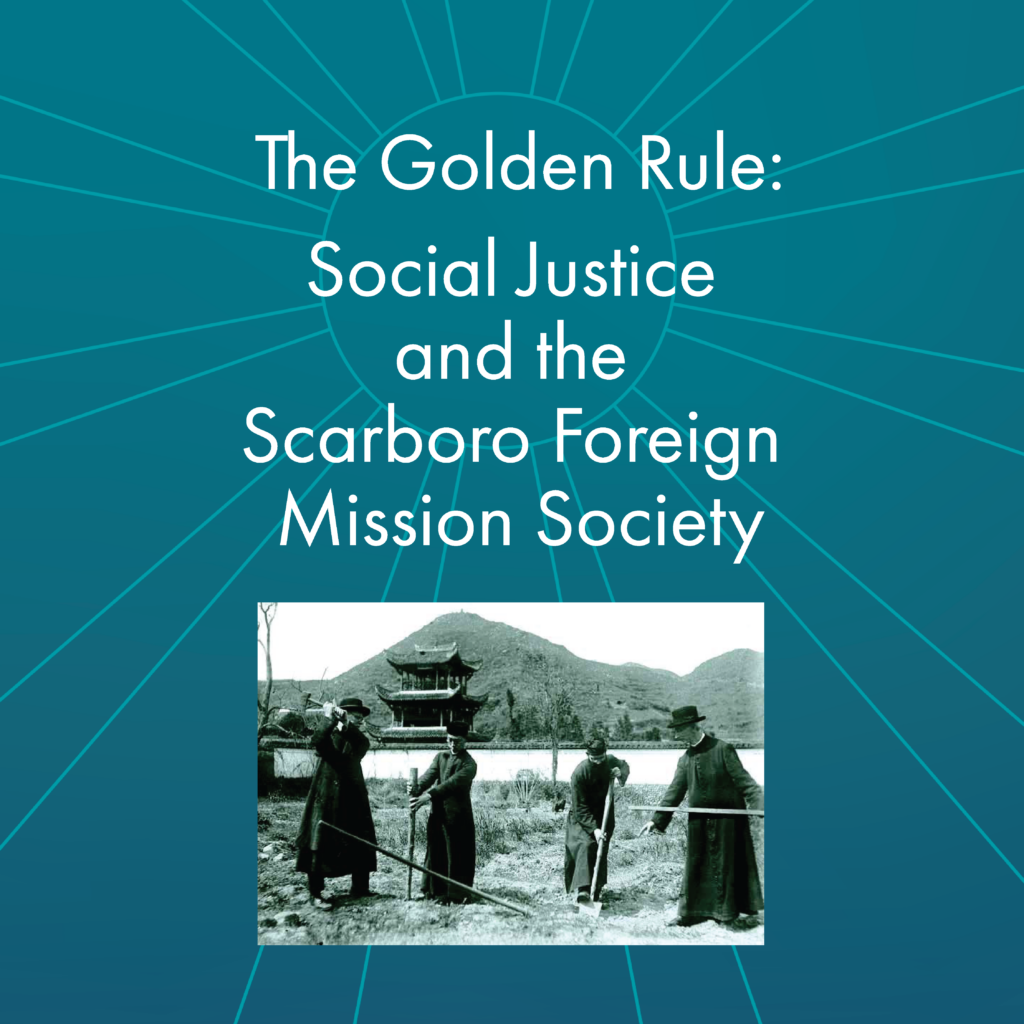Francesca Rousselle is the Processing Archivist for Special Collections: Archives and Rare Books at the John M. Kelly Library at the University of St. Michael’s College. She is responsible for the records of the Scarboro Foreign Mission Society and Sisters of Service. She received her MA in Classics from Queen’s University and her MI in Archives & Records Management and Library & Information Studies from the University of Toronto’s iSchool.
What goes into curating an exhibition? A lot more than most people think!
I confess to being a terrible person with whom to visit museums and galleries because I take hours pausing to read each and every caption, interpretive panel, brochure and everything else. I have visited and worked in a variety of museums over the years and have encountered exhibitions ranging from the terrible and slapdash to the world-class, so when I began to work on developing an exhibition to celebrate the donation of the Scarboro Foreign Mission Society records to the John M. Kelly Library’s Special Collections, I knew I wanted to do more than simply “display cool stuff.”
Exhibitions are, of course, visual enterprises – the goal is always to draw the visitor’s eye and encourage them to take a closer look at what’s on display. The Scarboro Missions collection is full of materials from all over the world but sticking a bunch of interesting items in the cases and calling it a day would not create an exhibit; in addition to being visual, exhibitions are fundamentally interpretive.
As I processed the records – rehousing delicate items for long-term preservation, describing records for researcher access in our online database and integrating materials with the existing collections at the Kelly Library, I found myself asking, ‘what kind of story do I want to tell?’ We call it exhibit curation, not exhibit displaying, because a good deal of planning and active decision-making occurs months before anything begins to go into the cases.
I considered what the purpose of the exhibition was – namely, celebrating the donation of the records, introducing the history of Scarboro Missions to the St. Michael’s community and, with hope, encouraging visitors to do further research with the records. It would be impossible to display all, or even most, of the Scarboro Missions records as the collection occupies close to 200 boxes, and so I had to be deliberate in selecting a topic for the exhibit. I needed a subject and theme that would encapsulate the charism of 100 years of history, and which provides a self-contained and interesting experience for a general audience while also enticing keen visitors to engage with the collection beyond what’s on display.

Aware that my audience consisted of everyone from undergraduate students and long-time faculty to the general public and members of Scarboro Missions, all with varying knowledge and interest in Scarboro’s history, I decided to work from a social justice angle, focusing on the development of the iconic Golden Rule poster and branching out from there. I hoped the Golden Rule could be a central touchstone to all visitors regardless of their prior knowledge or academic interests. Much as the Golden Rule serves as common ground between faiths, I hoped that most visitors would have some sort of personal connection or interest in ideas of justice, whether economic, political, ecological or ecumenical and interfaith.
With a topic chosen, I had to begin to select which materials I wanted to display. What items were eye-catching? What could be used to construct an engaging narrative for my audience? I decided to organize the exhibit into several mini-stories centred on members or activities in the Society’s history, each falling into a ‘type’ of social justice. Each of these in turn corresponds to a dedicated display case, so casual visitors could seek out the stories that interested them and could enjoy a complete experience without having to go through all the materials. Keeping in mind, however, that not all visitors would be casual viewers (and that I wanted to encourage deeper engagement with archival materials), I tied together the individual stories via a timeline of major social justice milestones in the Scarboro Mission’s history. Visitors interested in the broader history of the Society could follow this loose chronology to trace the development of justice-oriented mission work.
Unlike museum or art gallery exhibitions, archival exhibitions can be a bit tricky since many of our records are flat pieces of paper with text on them: not the most visually interesting! I made the decision to use a mix of visual and textual materials, enough ideally to satisfy both the eyes and the intellectual curiosity of visitors. Each exhibit cases includes a second “layer” of narrative to the exhibit; keen visitors can enjoy an optional “deeper dive” into text-heavy materials via the exhibition case drawers.
On a practical note, once items were selected for display, they were evaluated for any preservation concerns – were they too fragile to be on display for several months outside of archival storage? In cases where originals could not be displayed, replicas were created; for original items, mounts were constructed to cradle the magazines and books on display without damaging them.
The Golden Rule: Social Justice and the Scarboro Foreign Mission Society launches Tuesday, January 21st, 2025. The exhibition will open with a lecture by Father Robert E. Carbonneau, C.P., Ph.D., Research Fellow of the Ricci Institute for Chinese-Western Cultural History at Boston College and Archivist of the Passionist China Collection. Fr. Carbonneau’s lecture Reflections on History To Shape the Future, 1918- 2025: The Scarboro Mission Archives at St. Michael’s College at the University of Toronto, will be followed by a reception and viewing of the exhibition at the John M. Kelly Library. RSVP HERE to attend
Read other InsightOut posts.
